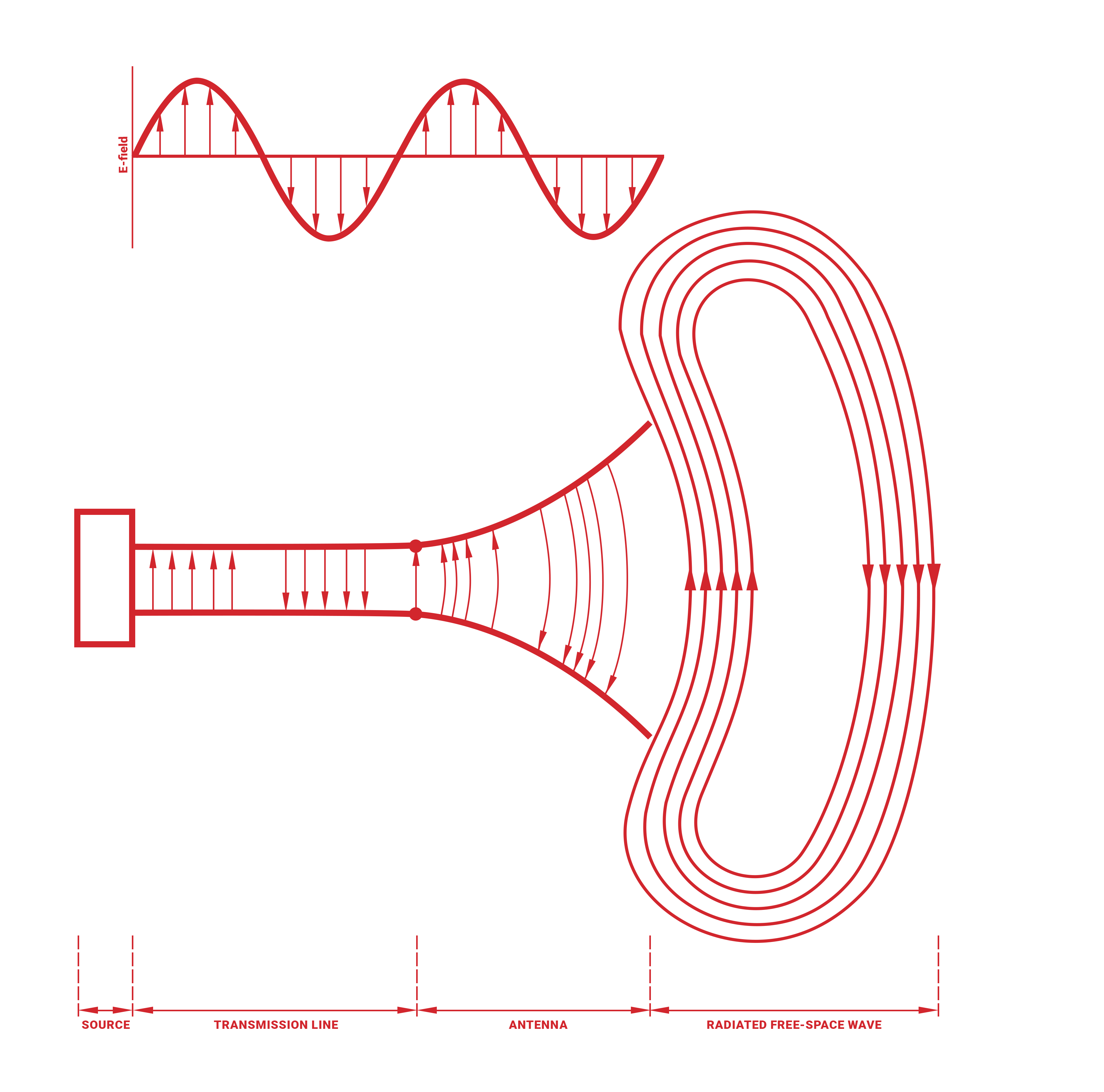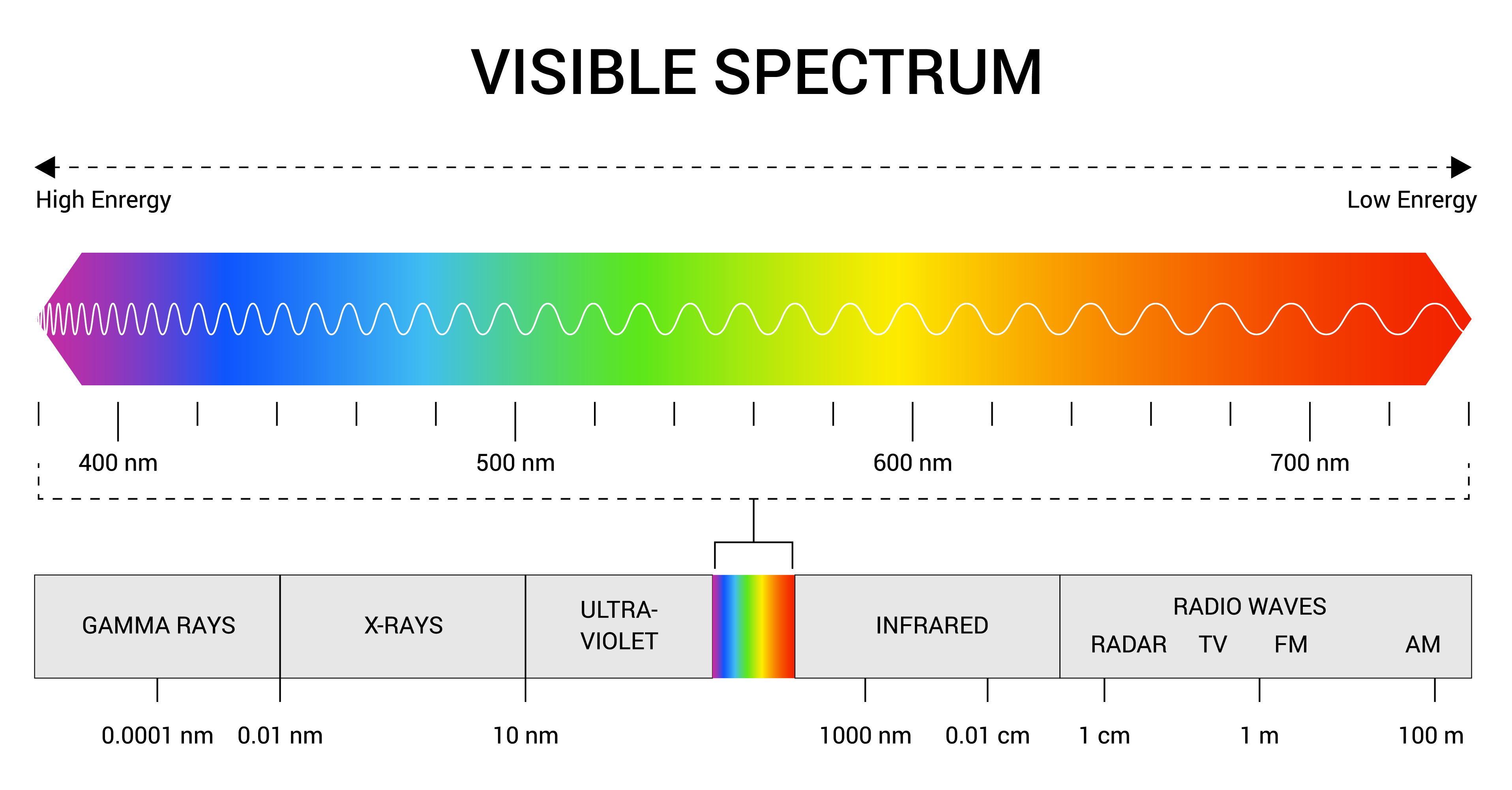What is an antenna?
1. Introduction
An antenna is a device designed to transmit (Tx antenna) or receive electromagnetic waves (Rx antenna). In other words the antenna is the transitional structure between free-space and a guiding device, as shown in Figure 1. The guiding device or transmission line may take the form of a coaxial line or a hollow pipe(waveguide), and it is used to transport electromagnetic energy from the transmitting source to the antenna, or from the antenna to the receiver. In the former case, we havea transmitting antenna and in the latter a receiving antenna. It plays a crucial role in wireless communication systems by converting electrical currents into electromagnetic waves for transmission or converting received electromagnetic waves back into electrical currents for reception. Antennas are used in various applications, including radio and television broadcasting, wireless communication (such as Wi-Fi and cellular networks), radar systems, satellite communication, and many other forms of wireless technology. The design of an antenna depends on its intended application and the frequency range of the electromagnetic waves it is designed to handle. Different types of antennas, such as dipole antennas, Yagi antennas, parabolic antennas, and patch antennas, are used based on specific requirements and characteristics of the communication system.

2. Electromagnetic spectrum
The EM spectrum is typically divided into seven fields: radio waves, microwaves, infrared radiation, visible light, ultraviolet, x-rays and gamma rays. The field order is determined by wavelength and frequency.
1.Radio Waves:
This includes the lowest frequencies and longest wavelengths. Radio waves are used for radio broadcasting, television, communication, and navigation.
2.Microwaves:
These waves have shorter wavelengths and higher frequencies than radio waves. Microwaves are used in technologies such as microwave ovens, radar, and some types of communication.
3.Infrared Radiation:
This portion of the spectrum consists of longer wavelengths and lower frequencies than visible light. Infrared radiation is commonly used in heat sensing, night vision, and certain communication applications.
4.Visible Light:
This is the narrow range of the spectrum that the human eye can perceive. The colors of visible light, from longest to shortest wavelength, are red, orange, yellow, green, blue, indigo, and violet.
5.Ultraviolet (UV) Radiation:
UV radiation has shorter wavelengths and higher frequencies than visible light. It is often associated with sunburn and is used in applications like sterilization and certain types of imaging.
6.X-rays:
X-rays have shorter wavelengths and higher frequencies than UV radiation. They are used in medical imaging (X-ray radiography), security screening, and scientific research.
7.Gamma Rays:
Gamma rays have the shortest wavelengths and highest frequencies in the electromagnetic spectrum. They are used in medical treatments, such as radiation therapy, and are also produced in nuclear reactions.

3. Types of the antenna
We will now introduce and briefly discuss some forms of the various antenna types. Several common categories are often used in describing and distinguishing one antenna type from another.
1.Dipole Antenna:
• Consists of two conductive elements, typically a straight wire or metal rods.
• Commonly used for radio and television broadcasting.
2.Monopole Antenna:
• Similar to a dipole but with only one conductive element.
• Often used in applications where a ground plane is present, such as in mobile communication devices.
3.Yagi-Uda Antenna:
• Directional antenna with multiple parallel elements, including a driven element, reflector, and one or more directors.
• Widely used for television reception and amateur radio.
4.Patch Antenna:
• Flat, planar antenna with a radiating patch on a substrate.
• Commonly used in applications like Wi-Fi and RFID.
5.Parabolic Reflector Antenna:
• Consists of a parabolic dish and a feed antenna at its focal point.
• Used in satellite communication, radar systems, and microwave point-to-point links.
6.Horn Antenna:
• Shaped like a horn, used for wideband applications and high-frequency ranges.
• Commonly used in microwave and millimeter-wave systems.
7.Log-Periodic Antenna:
• Consists of a series of dipole elements of varying lengths.
• Exhibits consistent performance over a wide frequency range and is used in applications like TV antennas.
8. Loop Antenna:
• Forms a closed loop of conductive material.
• Used in AM radio reception and inductive coupling applications.
9.Helical Antenna:
• Spiral-shaped antenna with a helix structure.
• Used for satellite communication, radio astronomy, and RFID.
10. Whip Antenna:
• Simple, vertical, and flexible antenna
• Commonly used in portable and mobile communication devices, such as walkie-talkies.
11. Cone Antenna:
• Shaped like a cone, used for broadband and UWB (Ultra-Wideband) applications.
12. Slot Antenna:
• Consists of a slot or opening in a conductive surface.
• Used in radar and communication systems.
4. Conclusion
In conclusion, antennas are essential components in the field of electromagnetic communication, serving the purpose of transmitting and receiving signals across various applications. The diversity in antenna types allows for adaptation to specific requirements such as frequency range, directionality, and environmental conditions. As technology continues to advance, antennas play a crucial role in enabling wireless communication systems, satellite links, radar systems, and more. Antenna technology is continually evolving to meet the demands of emerging communication technologies, including 5G, Internet of Things (IoT), and beyond. As the world becomes increasingly connected, antennas will remain fundamental in enabling the seamless transmission of information, making them a vital component in our modern wireless communication landscape.